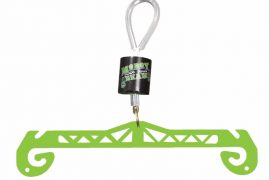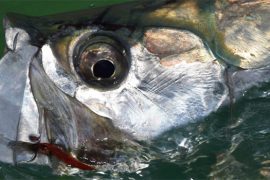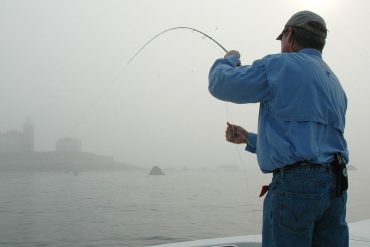Now is the Time to Pay Attention to Your Dock
With hurricane season in full swing, it is time for waterfront homeowners to walk the planks. That is, it’s right now before a named storm hits hard when you need to take the necessary precautions to avoid catastrophic dock failure. Routine inspection and preventative maintenance go a long way and could potentially save you a boatload of money in costly repairs.

To learn more about thwarting serious and expensive dock damage, we turned to a professional, Will Clemente. The owner/operator of Dolphin Mooring Whips in Pompano Beach, Will has been in the dock maintenance, accessory and repair business for over 25 years. Having dealt with dozens of hurricanes over the last three decades and the aftermath they leave in their wake, Clemente certainly knows a thing or two about the damage that sustained tropical-force winds and storm surge can cause residential docks.
The obvious deterioration seen around the waterline of dock pilings is the result of a severe, yet common worm infestation that eats away at the wood.
Plank Reinforcement
While building codes have changed, a number of years ago residential docks were built using galvanized nails—estimated to have an 8- to 10-year lifespan. This means that today, most canal-front property owners don’t even realize most of their nails have already failed or are barely providing any structural support. In these scenarios, one severe storm surge could spell the end of most, if not all of the wooden planks. With little holding them in place, the planks could simply pop off and float away. This is why Clemente highly recommends waterfront homeowners reinforce their dock planks with stainless steel fasteners that are impervious to rust and corrosion. Whether the homeowner selects nails or screws, or whether they do the hammering and screwing themselves or hire a professional contractor to do the work, this is perhaps the most important precautionary measure any dock owner can take.
Piling Restoration
Talking with Will, I learned more than a few things, one of which was the number one cause of piling damage—wood boring worms. The obvious deterioration seen around the waterline of dock pilings is the result of a severe, yet common worm infestation that eats away at the wood. Left untreated, over time the worms, which require both air and sea water to survive, will bore directly through the entire piling.
For new homeowners the solution is simple, with piling installers wrapping new poles from just below the lowest point in the tidal range to just above the highest point in the tidal range with a black material called tight wrap. The plastic shell protects the wood from infestation and guarantees many years of trouble-free use.
For existing dock owners with an active infestation and deteriorated pilings, it’s a different story altogether. The only solution to combat the existing problem without having to replace the entire piling is with a piling restoration kit. The damaged area of the piling is wrapped in a heavy duty PVC jacket, with a two-inch buffer around the pole that is filled with Sakrete. The result is a reinforced concrete sleeve around the entire damaged area. At a cost of just over $100 per piling, it is far more affordable than replacing a $600 piling. It is important to inspect and ensure dock pilings are in good condition because they support the entire dock like a skeletal system. If the piling’s structural integrity is jeopardized, it is just a matter of time before the entire dock structure fails.
Additional Precautionary Measures
In preparation of a named storm, waterfront homeowners should remove all patio furniture, bait pens and nets, coolers and buckets and anything else from the dock that could potentially become a projectile, become damaged or blown into the canal.
It is also crucial fillet tables are fastened to the dock with stainless steel hardware. The same applies for dock boxes, which should also be drilled with a dime-sized hole in the lowest point on the side of the dock box to allow water to drain. In regard to mooring whips, if you do not in-tend on using them, remove from the base bracket and secure the whips.
Boat owners who insist on tying their boats away from the dock in the middle of the canal in preparation of sustained tropical-force winds should be sure to tie all mooring lines to the lowest point possible on adjacent pilings. The wooden poles are driven into the substrate and installed in a way where they have excellent parallel support to the seawall and sufficient support when force is applied toward the seawall, but little support when counter force is applied away from the seawall. Tying mooring lines to the top of the pilings applies excessive force that may ultimately pull the piling away from the seawall and damage the entire dock structure.
Finally, it’s excellent practice to have multiple plans in place depending on the severity of an approaching storm. Plan A may include securing your vessel to the dock with extra mooring lines and fenders while utilizing your mooring whips. Plan B may include securing the vessel 15 feet away from the dock with the use of opposing lines and anchors, while Plan C may include removing the boat from the water altogether and securing the vessel in a hurricane safe facility.
Now is the Time to Pay Attention to Your Dock
With hurricane season in full swing, it is time for waterfront homeowners to walk the planks. That is, it’s right now before a named storm hits hard when you need to take the necessary precautions to avoid catastrophic dock failure. Routine inspection and preventative maintenance go a long way and could potentially save you a boatload of money in costly repairs.

To learn more about thwarting serious and expensive dock damage, we turned to a professional, Will Clemente. The owner/operator of Dolphin Mooring Whips in Pompano Beach, Will has been in the dock maintenance, accessory and repair business for over 25 years. Having dealt with dozens of hurricanes over the last three decades and the aftermath they leave in their wake, Clemente certainly knows a thing or two about the damage that sustained tropical-force winds and storm surge can cause residential docks.
The obvious deterioration seen around the waterline of dock pilings is the result of a severe, yet common worm infestation that eats away at the wood.
Plank Reinforcement
While building codes have changed, a number of years ago residential docks were built using galvanized nails—estimated to have an 8- to 10-year lifespan. This means that today, most canal-front property owners don’t even realize most of their nails have already failed or are barely providing any structural support. In these scenarios, one severe storm surge could spell the end of most, if not all of the wooden planks. With little holding them in place, the planks could simply pop off and float away. This is why Clemente highly recommends waterfront homeowners reinforce their dock planks with stainless steel fasteners that are impervious to rust and corrosion. Whether the homeowner selects nails or screws, or whether they do the hammering and screwing themselves or hire a professional contractor to do the work, this is perhaps the most important precautionary measure any dock owner can take.
Piling Restoration
Talking with Will, I learned more than a few things, one of which was the number one cause of piling damage—wood boring worms. The obvious deterioration seen around the waterline of dock pilings is the result of a severe, yet common worm infestation that eats away at the wood. Left untreated, over time the worms, which require both air and sea water to survive, will bore directly through the entire piling.
For new homeowners the solution is simple, with piling installers wrapping new poles from just below the lowest point in the tidal range to just above the highest point in the tidal range with a black material called tight wrap. The plastic shell protects the wood from infestation and guarantees many years of trouble-free use.
For existing dock owners with an active infestation and deteriorated pilings, it’s a different story altogether. The only solution to combat the existing problem without having to replace the entire piling is with a piling restoration kit. The damaged area of the piling is wrapped in a heavy duty PVC jacket, with a two-inch buffer around the pole that is filled with Sakrete. The result is a reinforced concrete sleeve…





